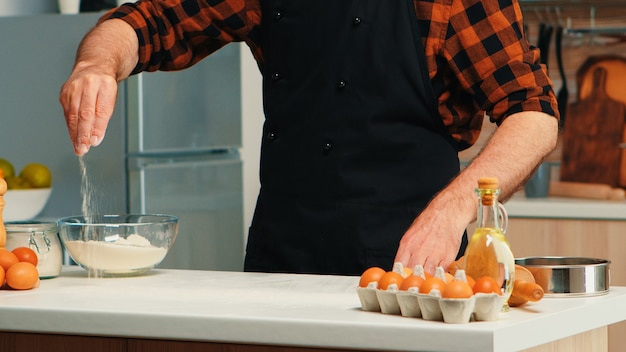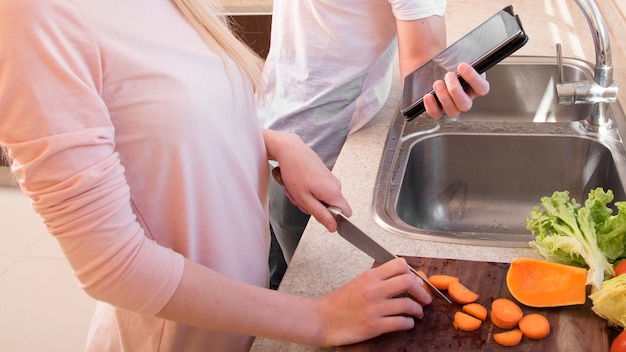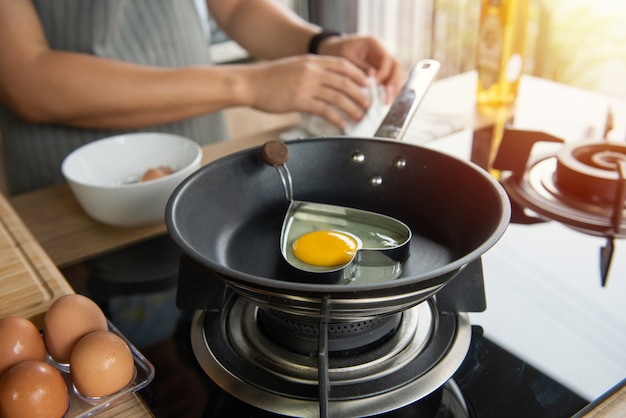(Part 1) The Basics: Setting the Stage for Success

Microwave-Safe Containers: Your Culinary Canvas
Before we even touch the eggs, we need the right tools for the job. You need a microwave-safe bowl or mug – everyone has a few of these around the house, right? But remember, a good lid is essential to prevent those messy egg explosions. You don't want a sticky surprise in your microwave, trust me.choosing the right eggs: Freshness is Key
Now, onto the stars of the show – the eggs. I'm not a stickler for fancy free-range or organic, but those fresh, farm-fresh eggs make a difference. You’ll know they're fresh if the yolk sits up high and proud in the white. If it's flat and spread out, it’s probably a bit older and might be a tad runnier than you’d like.Breaking the Eggs: A Skill in Itself
Okay, let's crack those eggs open. Now, I'm a bit of a perfectionist when it comes to this step, so I like to tap the egg gently on a flat surface, then carefully peel apart the shell. You want to avoid getting any bits of shell in the bowl, which can be a real pain to fish out later.Seasoning Your Eggs: Flavour is Everything
This is where the real fun begins. Salt and pepper are the classics, of course, but don’t be afraid to experiment. A splash of milk or cream adds richness, and a pinch of fresh herbs like chives or parsley can really brighten up your eggs. Personally, I love a good sprinkle of grated cheese in my scrambled eggs, but that's just me.Microwave Power: Finding Your Sweet Spot
Lastly, let’s chat about microwave power. Different models have different strengths, so you'll need to find the setting that works best for yours. Start with a lower power setting (around 50%) and see how your eggs cook. You can always adjust the power or the cooking time later.(Part 2) Scrambled Eggs: Mastering the Microwave Method

The Classic Microwave Scramble: Simple and Delicious
1. Crack two eggs into a microwave-safe bowl.2. Whisk them with a fork until they're nice and frothy. 3. Add a splash of milk or cream, a pinch of salt, and a good grind of pepper.4. Microwave on high power for 30 seconds to 1 minute.5. Take out the bowl and give the eggs a good stir. Don't worry if they don't look fully cooked yet.6. Microwave for another 30 seconds, and stir again.7. Repeat steps 5 and 6 until the eggs are cooked to your liking.The key here is the stirring. It prevents those dreaded hard bits from forming and ensures a soft and creamy texture.
The No-Stir Scrambled Eggs: A Gamble Worth Taking
For those who prefer a more hands-off approach, there's the no-stir scramble. It's a bit of a gamble, but if you get it right, it's an absolute dream.1. Crack two eggs into a microwave-safe bowl.2. Add a tablespoon of water and whisk well. 3. Season as you like, and microwave on high for 1 minute. 4. Let the eggs stand for a minute or so before serving.The secret here is the water. It helps create a lighter, fluffier texture. Just be careful, as the steam from the eggs can be quite hot.
Adding Some Glamour: The microwave omelette
Now, for those who want to impress their friends, why not try a microwave omelette? It's not as tricky as you might think. 1. Crack two eggs into a microwave-safe bowl.2. Add a tablespoon of milk or cream and a pinch of salt.3. Whisk well, and pour the mixture into a shallow, microwave-safe dish.4. Sprinkle your favourite toppings – cheese, vegetables, herbs – on top.5. Microwave on high power for 1 minute to 1 minute 30 seconds, or until the egg is set and the topping is melted.To help you out with the topping, here's a little table with some ideas:
| Topping | Quantity | Cooking Time |
|---|---|---|
| Cheese | 1 tablespoon shredded | 30 seconds |
| Vegetables (peppers, onions, mushrooms) | ?? cup chopped | 1 minute |
| Ham | 2 slices | 30 seconds |
Now, I know it's tempting to fold your omelette in half, but in the microwave, it’s best to leave it flat for even cooking.
Troubleshooting: Microwave Egg Woes and Solutions
Let's be honest, sometimes even the best intentions go awry. Here are a few common issues and tips for tackling them: Overcooked eggs: If your eggs are too dry and rubbery, it's probably because you cooked them for too long. In future, reduce the cooking time by 15 to 20 seconds. Undercooked eggs: If your eggs are still runny in the middle, simply microwave for another 15 to 20 seconds. Unevenly cooked eggs: If one part of your egg is cooked more than another, it's probably because your microwave power is uneven. Try stirring the eggs halfway through the cooking time.(Part 3) boiled eggs: Perfect Soft-Boiled or Hard-Boiled in the Microwave

Perfect soft-boiled eggs: The Microwave Method
1. Pierce the bottom of each egg with a pin to prevent cracking. 2. Place the eggs in a microwave-safe bowl and cover with cold water, making sure the eggs are fully submerged. 3. Microwave on high power for 1 minute per egg. 4. Let the eggs stand for 5 minutes before serving.The longer you let the eggs sit in the bowl, the more cooked the yolk will be. If you want a really runny yolk, reduce the standing time to 3 minutes.
hard-boiled eggs: A Microwave Shortcut
For those who prefer their eggs cooked through and through, the microwave offers a quicker method.1. Pierce the bottom of each egg with a pin to prevent cracking. 2. Place the eggs in a microwave-safe bowl and cover with cold water, making sure the eggs are fully submerged. 3. Microwave on high power for 3 minutes. 4. Let the eggs sit for 5 minutes before serving.This method is much quicker than traditional stovetop boiling. The key is to make sure the eggs are fully submerged in water to avoid overcooking.
Tips for perfect boiled eggs
To prevent cracking, use a bowl wide enough to allow the eggs to move freely. If you're concerned about explosions, add a pinch of salt to the water. It helps raise the boiling point. For easier peeling, cool the eggs in cold water for a few minutes after cooking.(Part 4) Beyond the Basics: Exploring Other Egg Delights
We’ve covered the basics, but let’s face it, the possibilities are endless.The Ultimate Microwave Egg Muffin: A Quick and Easy Treat
For a quick and easy breakfast or snack, try these microwave egg muffins. They're light, fluffy, and perfect for on-the-go. 1. Crack two eggs into a microwave-safe mug.2. Add a tablespoon of milk or cream, a pinch of salt, and a sprinkle of pepper.3. Whisk well, and add a tablespoon of your favourite shredded cheese.4. Microwave on high power for 45 seconds to 1 minute, or until the egg is set.5. Let the muffin cool for a few minutes before enjoying.microwave egg toast: A Savoury Breakfast Treat
Who needs a toaster? This method turns your bread into a delicious egg-topped treat.1. Lightly grease a slice of bread with butter or margarine.2. Crack an egg into a bowl and whisk it with a pinch of salt and pepper.3. Pour the egg mixture onto the bread.4. Microwave on high power for 1 minute to 1 minute 30 seconds, or until the egg is set.For an added boost of flavour, try topping your egg toast with a sprinkle of cheese or a few slices of bacon.
(Part 5) microwave egg recipes: A World of Possibilities
Let's get creative!Savoury Egg Recipes
Microwave Egg fried rice: Add a beaten egg to your favourite leftover fried rice and microwave for 1 minute to 1 minute 30 seconds. Cheesy Microwave Egg Quesadillas: Fill a tortilla with shredded cheese and a beaten egg. Fold it in half and microwave for 1 minute. Microwave Egg Soufflé: Combine whisked eggs with milk, cheese, and herbs. Pour into a microwave-safe ramekin and cook for 2 minutes.Sweet Egg Recipes
Microwave Egg Pudding: Combine eggs, sugar, and milk. Pour into a microwave-safe bowl and cook for 1 minute to 1 minute 30 seconds. Microwave Egg Custard: Whisk eggs, milk, and sugar. Pour into a ramekin and cook for 2 minutes.(Part 6) Tips for Microwave Egg Success: Unlocking the Secrets
Remember, microwave cooking is not about precise timings, but about observation and adjusting as you go. Don’t overcrowd the microwave. Give your eggs plenty of space to cook evenly. Start with lower power. You can always add more time later, but it's harder to undo overcooked eggs. Keep an eye on your eggs. It’s best to check on them every 15 to 20 seconds to ensure they cook evenly. Don’t forget to stir. It helps to prevent the eggs from sticking and ensures even cooking. Let the eggs rest. This allows them to finish cooking and the steam to distribute evenly.(Part 7) Safety First: Microwave Egg Precautions
Let's face it, microwaves can be unpredictable. Don't use metal containers. Metal can reflect microwaves and cause sparks. Cover your bowl with a lid. This will help to prevent splattering and keep the egg moist. Be careful of hot steam. Always use oven mitts when handling your eggs after cooking.(Part 8) FAQs: Your Microwave Egg Questions Answered
Now, let's address those common questions:1. Can I cook multiple eggs at once?
Yes, you can! Just make sure you have a large enough bowl to accommodate all the eggs. Add about 1 minute of cooking time per extra egg.2. What if my egg explodes in the microwave?
While it’s not common, it can happen. The best way to prevent this is to pierce the bottom of each egg with a pin. This will allow the steam to escape.3. What if my eggs are too runny?
Simply microwave them for a few more seconds, until they reach your desired consistency.4. Can I add vegetables to my scrambled eggs?
Absolutely! Just add them to the bowl before you microwave the eggs. Make sure the vegetables are chopped into small pieces to ensure they cook through.5. What if my eggs are too dry and rubbery?
You can add a tablespoon of milk or cream to the eggs before you microwave them. This will help to make them more moist.And there you have it – your complete guide to microwave egg cooking! I hope you've found this helpful and are ready to unleash your culinary creativity. Happy egg-cooking!
Everyone is watching

Prime Rib Roast Cooking Time Chart: Per Pound Guide
Cooking TipsPrime rib roast. Just the name conjures images of lavish dinners, crackling fires, and hearty laughter. It’s ...

How Long to Bake Potatoes in the Oven (Perfect Every Time)
Cooking TipsBaked potatoes are a staple in my kitchen. They're incredibly versatile, delicious, and surprisingly easy to m...

Perfect Rice Every Time: The Ultimate Guide to Cooking Rice
Cooking TipsAs a self-proclaimed foodie, I've always been a bit obsessed with rice. It's the foundation of countless cuisi...

The Ultimate Guide to Cooking Asparagus: Tips, Techniques, and Recipes
Cooking TipsAsparagus. The mere mention of this spring delicacy conjures up images of vibrant green spears, crisp and burs...

Ultimate Guide to Cooking the Perfect Thanksgiving Turkey
Cooking TipsThanksgiving. Just the word conjures up images of overflowing tables laden with delicious food, the scent of r...
